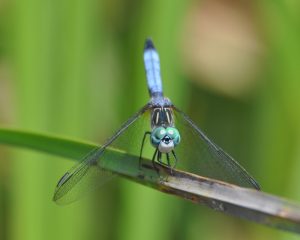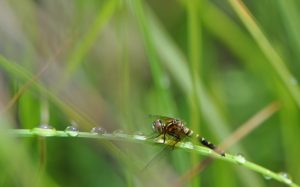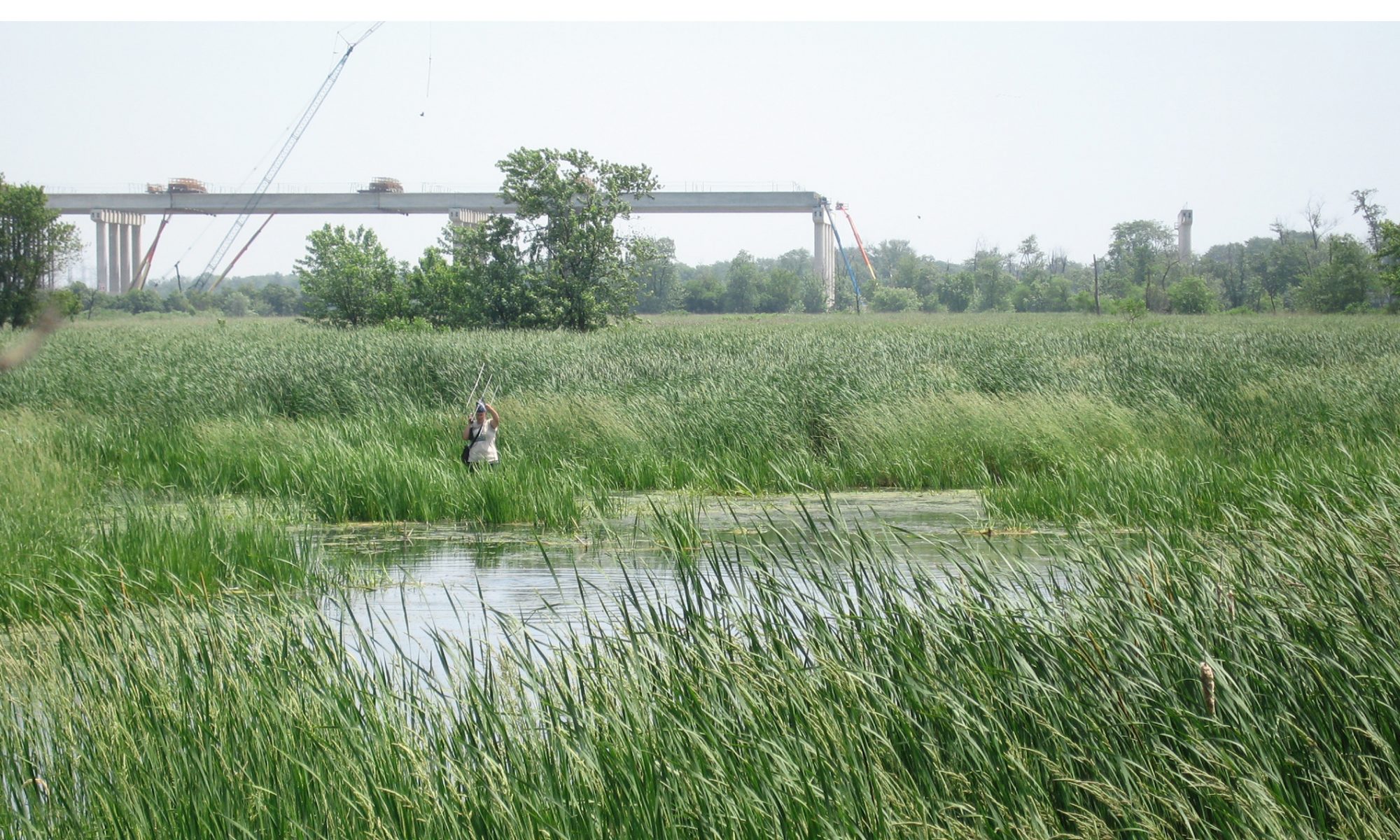 One of our earliest eDNA projects developed and tested primers for 4 common dragonfly species to determine species presence in reproductive (aquatic) habitat. We developed primers for Black Saddlebags, Blue Dashers, Widow Skimmers, and Green Darners. The primers amplified DNA of each target species in lab assays.
One of our earliest eDNA projects developed and tested primers for 4 common dragonfly species to determine species presence in reproductive (aquatic) habitat. We developed primers for Black Saddlebags, Blue Dashers, Widow Skimmers, and Green Darners. The primers amplified DNA of each target species in lab assays.
Field testing of water samples collected across 4 sites in the Tollway region detected 1 species (Widow Skimmer) at a single site (Orland Grasslands) on 2 sampling dates. Though the other species were likely present, many factors can influence eDNA detection, including species life history and phenology, environmental variables and conditions, and sampling artifacts (e.g., the volume of water collected). Future work could determine the role each factor plays in eDNA species detection (INHS 2019:13).
 A similar eDNA project focused on a state-threatened dragonfly, Elfin Skimmer, the smallest dragonfly in North America. This diminutive species has conservation status in several states across its range. Though widespread in eastern North America, Elfin Skimmers are locally rare, inhabiting relatively rare habitats on the landscape, e.g., bogs, sedge meadows, and calcareous fens. Additionally, both nymph and adult life stages are cryptic, making them difficult to detect using traditional visual surveys. As a potential conservation tool, eDNA sampling could minimize impacts to rare and sensitive habitats and broaden our ability to identify currently unknown populations. We designed eDNA primer-probe combinations to test for detection of Elfin Skimmers in aquatic habitats.
A similar eDNA project focused on a state-threatened dragonfly, Elfin Skimmer, the smallest dragonfly in North America. This diminutive species has conservation status in several states across its range. Though widespread in eastern North America, Elfin Skimmers are locally rare, inhabiting relatively rare habitats on the landscape, e.g., bogs, sedge meadows, and calcareous fens. Additionally, both nymph and adult life stages are cryptic, making them difficult to detect using traditional visual surveys. As a potential conservation tool, eDNA sampling could minimize impacts to rare and sensitive habitats and broaden our ability to identify currently unknown populations. We designed eDNA primer-probe combinations to test for detection of Elfin Skimmers in aquatic habitats.
Initial testing of a single primer-probe combination showed amplification of the target organism (Elfin Skimmer); however, the primer also amplified DNA of co-occurring non-target species. Systems with high biodiversity and many co-occurring closely-related species present challenges to eDNA approaches. To date, we have found few studies in the literature applying eDNA methods
to dragonflies and think the research could provide a valuable assessment tool to the field of dragonfly and insect conservation.
Visit our environmental education section to learn more about dragonflies
